For weeks, Western powers have been bracing for an invasion as Russia massed an estimated 150,000 troops on three sides of neighboring Ukraine. Western leaders have long warned Moscow would look for cover to invade — and just such a pretext appeared to come Monday when Putin recognized as independent two separatist regions. As reported by the AP:
Kremlin spokesman Dmitry Peskov said that Russia has recognized the rebel regions’ independence in borders that existed when they proclaimed their independence in 2014
MOSCOW (AP) — Western leaders said Tuesday that Russian troops have moved into rebel-held areas in eastern Ukraine after President Vladimir Putin’s recognized their independence — but some indicated it was not yet the long-feared, full-fledged invasion.
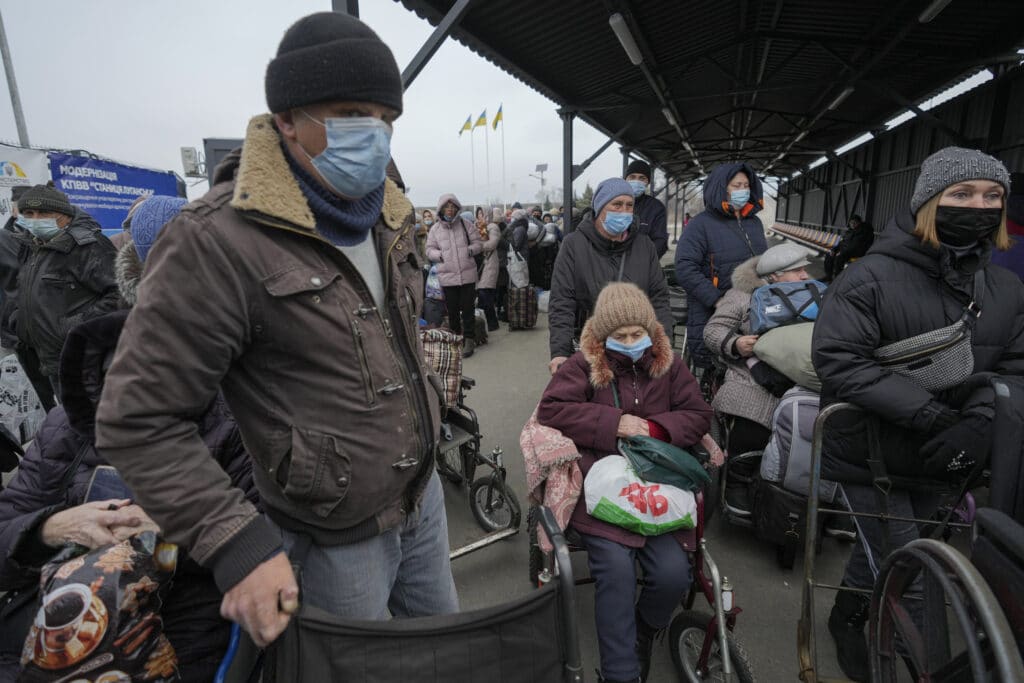
For weeks, Western powers have been bracing for an invasion as Russia massed an estimated 150,000 troops on three sides of neighboring Ukraine. They warned an attack would cause massive casualties, energy shortages in Europe and economic chaos around the globe — and promised swift and severe sanctions if it materialized. The European Union and Britain announced Tuesday that some of those measures were coming.
Western leaders have long warned Moscow would look for cover to invade — and just such a pretext appeared to come Monday, when Putin recognized as independent two separatist regions in eastern Ukraine, where government troops have fought Russia-backed rebels in a conflict that has killed over 14,000 people. The Kremlin then raised the stakes further Tuesday, by saying that recognition extends even to the large parts now held by Ukrainian forces.
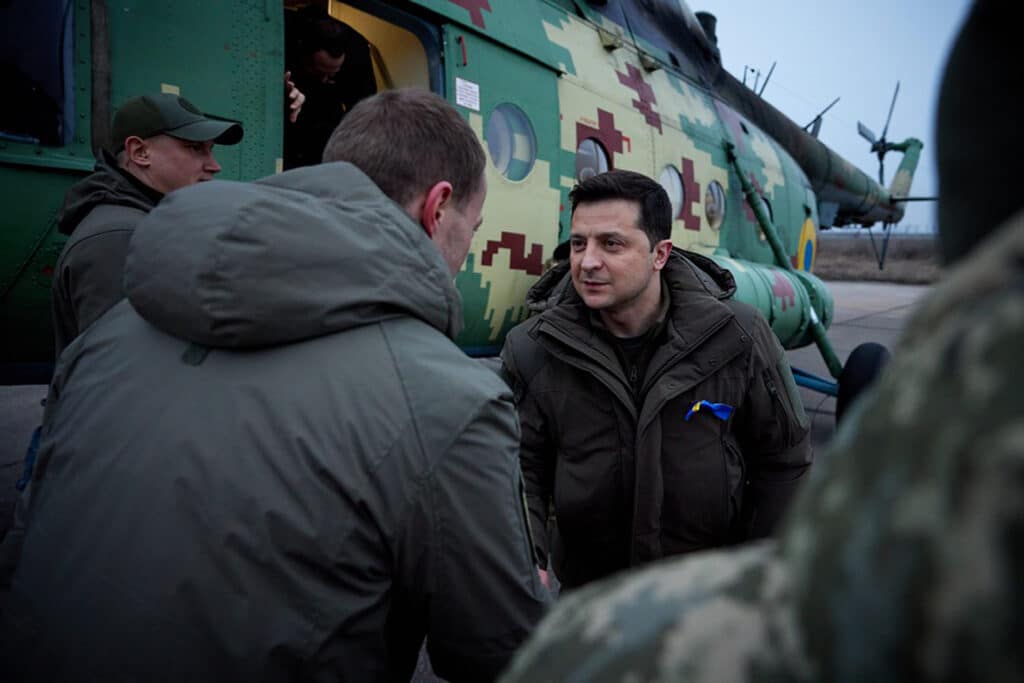
Kremlin spokesman Dmitry Peskov said that Russia has recognized the rebel regions’ independence “in borders that existed when they proclaimed” their independence in 2014 — broad territories that extend far beyond the areas now under the rebel control and that include the major Black Sea port of Mariupol.
Putin’s move to recognize the territories’ independence opened the door for him to formalize his hold on them and send forces in, though Ukraine and its Western allies have charged Russian troops have been fighting there for years. Moscow denies those allegations.
Condemnation from around the world was quick. Ukrainian President Volodymyr Zelenskyy said he would consider breaking diplomatic ties with Russia and Kyiv recalled its ambassador in Moscow.
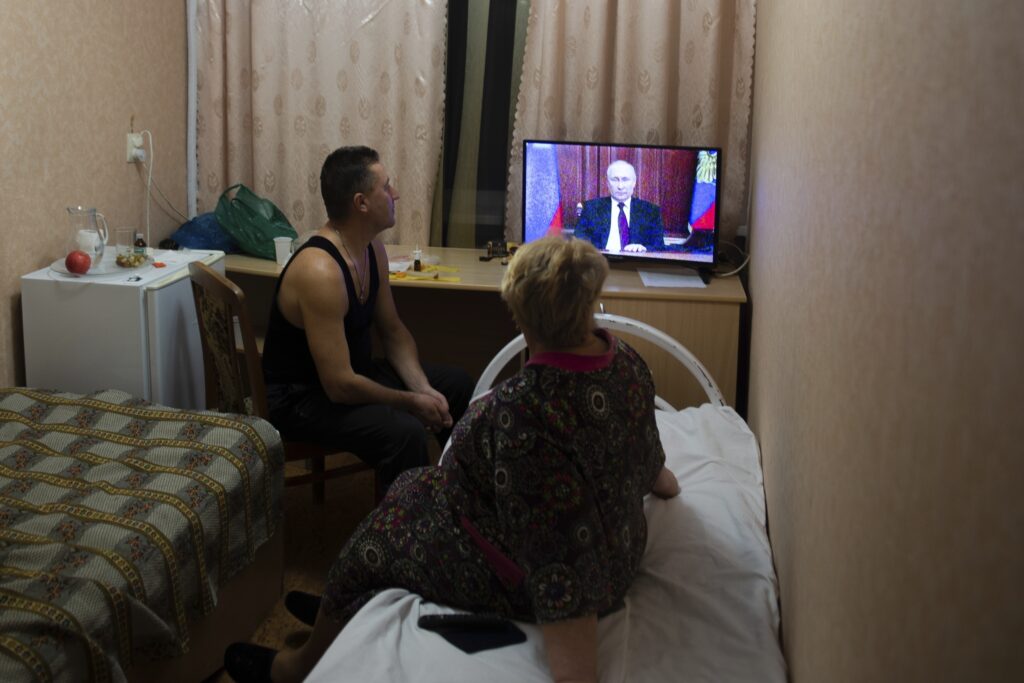
But confusion over what exactly was happening in eastern Ukraine threatened to hobble a Western response.
“Russian troops have entered in Donbas,” the name for the area where the two separatist regions are located, EU foreign policy chief Josep Borrell said in Paris. “We consider Donbas part of Ukraine.”
But in a distinction that could complicate a European and Western response, he added: “I wouldn’t say that (it is) a fully-fledged invasion, but Russian troops are on Ukrainian soil.”
Poland’s Defense Ministry and British Health Secretary Sajid Javid also said Russian forces had entered Ukraine’s east, with Javid telling Sky News that “the invasion of Ukraine has begun.”
Not all in Europe saw it that way. Spanish Foreign Minister José Manuel Albares noted “if Russia uses force against Ukraine, sanctions will be massive.”
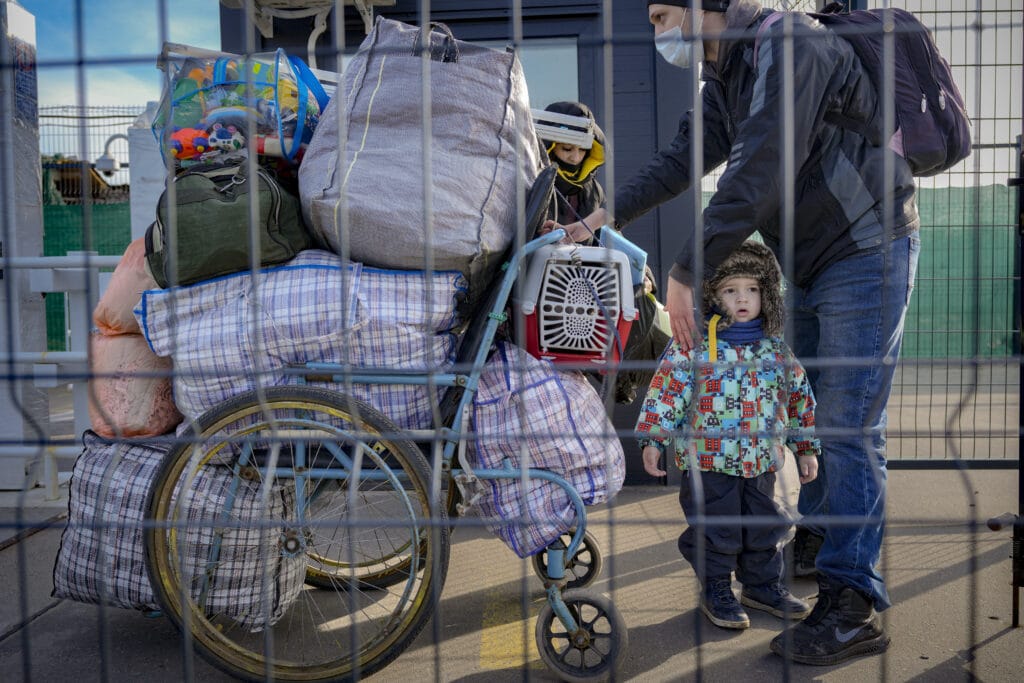
The Kremlin hasn’t confirmed any troop deployments to the rebel east, saying it will depend on the security situation. Vladislav Brig, a member of the separatist local council in Donetsk, told reporters that the Russian troops already had moved in, but more senior rebel leaders didn’t confirm that. Late Monday, convoys of armored vehicles were seen rolling across the separatist-controlled territories. It wasn’t immediately clear if they were Russian.
In response to the moves thus far, top EU officials said the bloc was prepared to impose sanctions on several Russian officials and banks financing the Russian armed forces and move to limit Moscow’s access to EU capital and financial markets. They gave few details.
EU foreign ministers are meeting later Tuesday to discuss the measures — but they did not appear to include the massive punishment repeatedly promised in case of a full-fledged invasion.
British Prime Minister Boris Johnson also said the U.K. would slap sanctions on five Russian banks and three wealthy individuals.
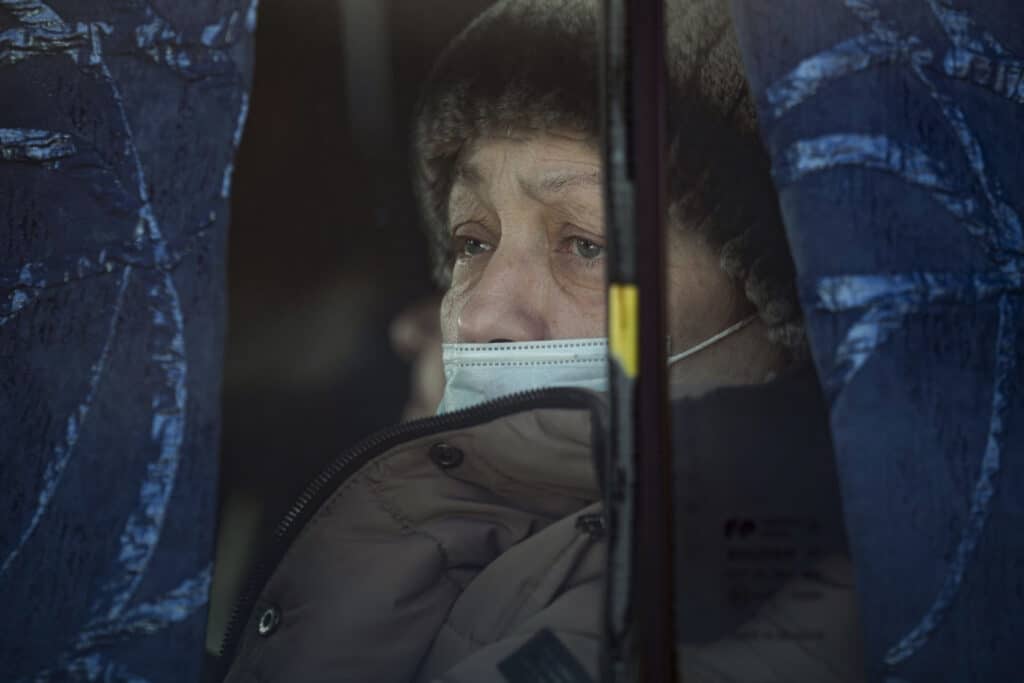
While he said that Russian tanks have already rolled into eastern Ukraine, he warned a full-scale offensive would bring “further powerful sanctions.”
The White House has also moved to respond, issuing an executive order to prohibit U.S. investment and trade in the separatist regions, and additional measures — likely sanctions — were to be announced Tuesday. Those sanctions are independent of what Washington has prepared in the event of a Russian invasion, according to a senior administration official who briefed reporters on the condition of anonymity.
The Russian moves also pushed Germany to suspend the certification process for Nord Stream 2 pipeline that was to bring natural gas from Russia. The pipeline was built to help Germany meet its energy needs, particularly as it switches off its last three nuclear power plants and phases out the use of coal, and it has resisted calls by the U.S. and others to halt the project.
As world leaders scrambled to decide on their response, legislation that will likely set the stage for a deeper move into Ukrainian territory moved through Russia’s parliament.
The bills, which sailed quickly through the Kremlin-controlled parliament, envisage military ties between Moscow and the separatist regions, including possible deployment of Russian military bases in the separatist regions.
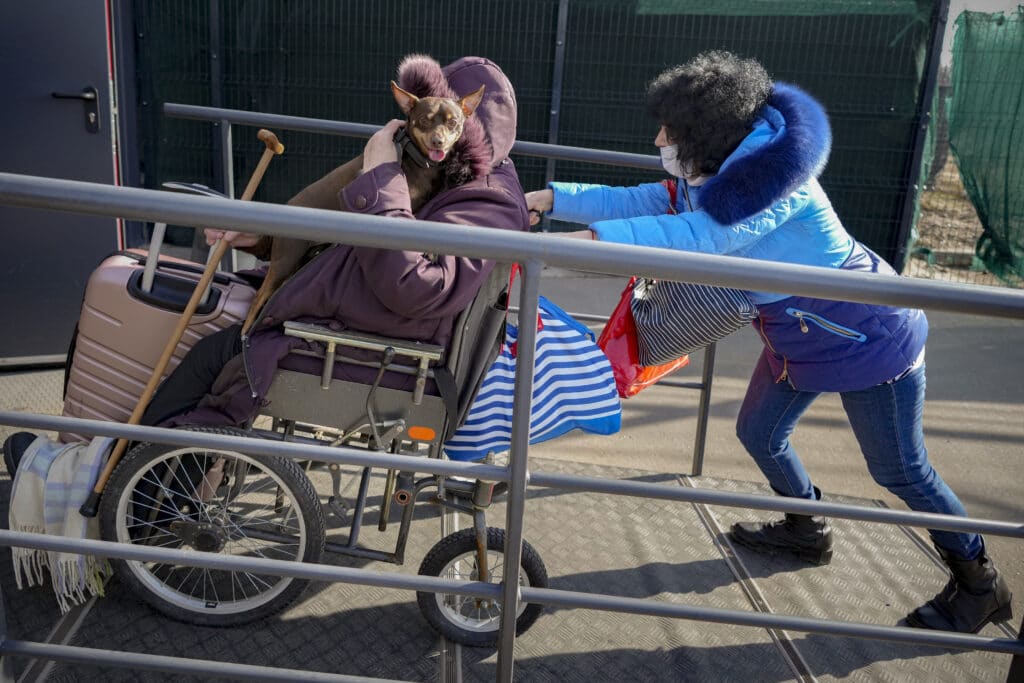
Even as alarm spread across the globe, Zelenskyy, the Ukrainian president, sought to project calm, telling the country in an address overnight: “We are not afraid of anyone or anything. We don’t owe anyone anything. And we won’t give anything to anyone.”
His foreign minister, Dmytro Kuleba, will be in Washington on Tuesday to meet with Secretary of State Antony Blinken, the State Department said.
Russia has long denied it has any plans to invade Ukraine, instead blaming the U.S. and its allies for the current crisis and describing Ukraine’s bid to join NATO as an existential challenge to Russia. Putin reiterated those accusations in an hourlong televised speech on Monday, when he announced that Russia would recognize the rebels.
“Ukraine’s membership in NATO poses a direct threat to Russia’s security,” he said.
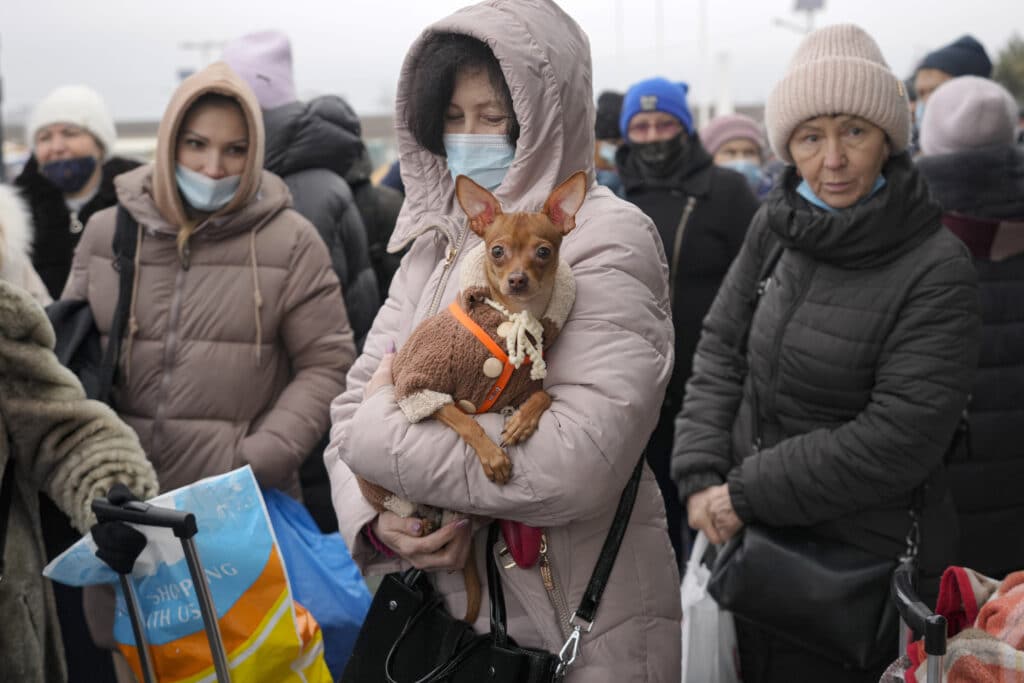
Russia says it wants Western guarantees that NATO won’t allow Ukraine and other former Soviet countries to join as members. Moscow has also demanded the alliance halt weapons deployments to Ukraine and roll back its forces from Eastern Europe — demands flatly rejected by the West.
Putin warned Monday that the Western rejection of Moscow’s demands gives Russia the right to take other steps to protect its security.
Sweeping through more than a century of history, Putin painted today’s Ukraine as a modern construct used by the West to contain Russia despite the neighbors inextricable links.
In a stark warning to Ukraine, the Russian leader charged that it has unfairly inherited Russia’s historic land granted to it by the Communist rulers of the Soviet Union and mocked its effort to shed the Communist past in a so-called “decommunization” campaign.
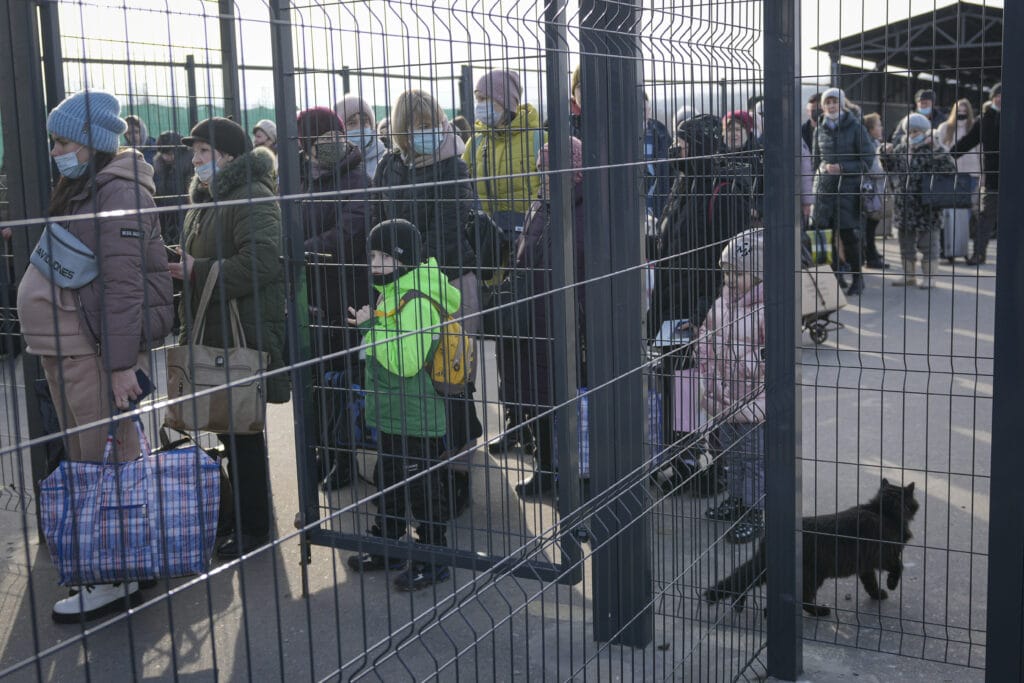
“We are ready to show you what the real decommunization would mean for Ukraine,” Putin added ominously in an apparent signal of his readiness to raise new land claims.
Amid the soaring tensions, U.S. President Joe Biden and Putin tentatively agreed to a meeting in a last-ditch effort to avoid war. But the U.S. always said that if Russia moved in, the meeting would be off.
By VLADIMIR ISACHENKOV and YURAS KARMANAU
Karmanau reported from Kyiv, Ukraine. Jill Lawless in London, Lorne Cook in Brussels, Barry Hatton in Lisbon, Portugal, Zeke Miller and Aamer Madhani in Munich, Germany; Geir Moulson and Frank Jordans in Berlin; Edith M. Lederer at the United Nations, and Eric Tucker, Ellen Knickmeyer, Robert Burns, Matthew Lee and Darlene Superville in Washington, contributed to this report.






